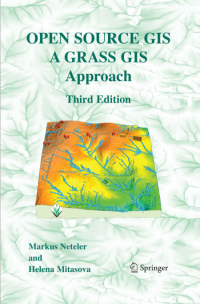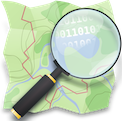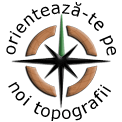Open Source GIS: A GRASS GIS Approach. Third Edition
de Mihai Terente
Authors: Markus Neteler and Helena Mitasova
Publisher: Springer, 2008
Series: The International Series in Engineering and Computer Science, 406 pages, 80 figures
Website: www.grassbook.org
Limited preview: books.google.com
ISBN: 038735767X
ISBN-13: 978-0-387-35767-6
e-ISBN-13: 978-0-387-68574-8
doi: 10.1007/978-0-387-68574-8
Table of Contents

Introduction: One may find quite difficult to write about a book which describes such a well-known GIS software. In the following we will try to make a review equally attractive for both the study of the book and for testing of the most complex open source GIS software currently existing.
The Software: GRASS stands for Geographical Resources Analysis Support System. Its development has started from a project at CERL, USA, in the ’80s, as an instrument for the management of the American military infrastructure (millions of hectares of land dedicated to training and military tests). Given the novelty of the solution and because of the high costs associated with equipment acquisition, CERL decided to grant a public license for the application. This decision favoured the large scale use at military facilities and the free circulation of the source code over the internet led to a high growth of the number of users and developers. At the beginning of the ’90s, GRASS community helped establish the Open GIS Foundation (currently OGC – Open Geospatial Consortium), an international organization focused on the development of the interoperability and accessibility of geospatial technologies through the elaboration of standards. Until now GRASS passed through six versions, each whith several releases. Starting from 2006 (GRASS 6) its development has been taken over by OSGeo – Open Source Geospatial Foundation.
Authors:
- Markus Neteler took the coordination of the GRASS project the after the CERL retreat in 1995.
- Helena Mitasova had contributed actively to the theoretical development of some GRASS modules, particularly those related to landscape evolution, sediment transport and soil erosion. She also developed the RST – Regularized Spline with Tension interpolation algorithm, very useful in creating high quality DEMs.
Brief History: The book that we are talking about has itself a history. It was initially published in 1995, in German, as a collection of tutorials for the students at the Institute of Landscape Architecture, Leibniz University Hannover, Germany. The collection was published integrally in 1996 by the Institute of Geography, at the same university. The book’s first edition was printed in English in 2002 and it was based on GRASS 5.0pre3. The second edition was published in 2004, based on GRASS 5.3 and integrated the program updates and the readers’ comments. The last edition, the third, reffers to GRASS 6 and we will further describe it.
Book structure: The aim of the book is to describe GRASS principles and functions. It is divided into 10 chapters and 3 appendices that adress the following features:
- General concepts on GIS, coordinate systems and projections;
- A short introduction to GRASS using the dataset delivered with the book, available at the book’s website. This is complete dataset that contains raster and vector data, and images covering different parts of North Carolina, USA, in Lambert proijection, datum NAD83 of geographical coordinates;
- Data import and export, considerably improved in GRASS 6;
- Data managent, visualization, analysis and modeling;
- Interactive visualization and map production;
- Sattelite images visualization and processing;
- Introduction to modules programming;
- Integration with other open-source software: gstat and R for geostatistics, MapServer and OpenLayers for webgis.
- The appendices contains the ecuations for different modules, related to:
- basic statistics: mean, median, mode, mean absolute deviation, variance, standard deviation, coefficient of variation, skewness, kurtosis and covariance;
- interpolation: bilinear and bicubic, IDW, spline;
- topographic analysis: slope, aspect and curvature for surfaces and volumes (!);
- computations of solar radiation, direct and indirect, on horizontal or inclinde planes
- walking persons
Strengths: The main book strength remains the fact that it is the only complete and integrated documentation source for GRASS. Other favorable aspects are:
- The examples are given in annotated commands for the command line.
to be continued…











